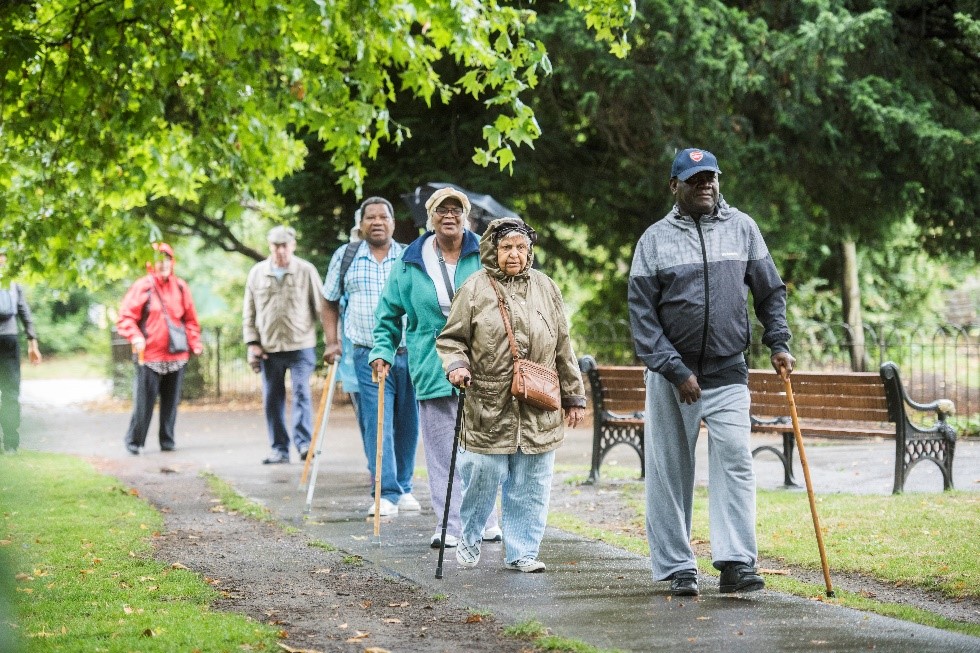To hit their carbon targets, local authorities will need to drive huge changes affecting every part of our lives – from the state of our homes to how we eat, travel, shop, and treat our environment.
As we think about who can help carry out this transformation, we should recognise the enormous potential of volunteers and community groups – and how supporting them creates more inclusive societies while protecting the planet.
In England alone, roughly 14 million took part in formal volunteering in 2020/21. And many of these volunteers have the abilities and enthusiasm to play a huge role in our zero carbon transition, in areas like reducing waste and helping green spaces thrive.
As local authorities look to deliver their zero carbon strategies, it’s vital they work with community groups and volunteers – nurturing great work that’s already happening, and supporting new initiatives.
Reasons to do so go far beyond reduced emissions. Volunteering increases wellbeing in those who do it – as well as creating positive change in the community. Council support for volunteering can also enhance opportunities for marginalised groups.
Finally, when volunteering links to sustainability, it positively engages residents in tackling the climate crisis – boosting their appetite for more action in the local area.
From park rangers to repair workshops: the power of volunteers
Protecting and improving green spaces is a cause many people feel passionately about. Burnley Council has worked closely with volunteers as it replaces intensive park management with approaches that improve biodiversity, cut carbon emissions and deliver health benefits to residents. These include creating meadows, planting different flowers and supporting local bee populations.
378 volunteers have been recruited as park rangers and to support the parks’ horticulture and woodland management, working alongside paid staff. They have learned new skills and some report feeling more confidence, happiness and a greater sense of purpose – while the council estimates their contribution has saved it £34,000.
In London, Hackney Council’s parks work is supported by The Tree Musketeers – a group of volunteers who plant and care for trees in the borough, and who have run their own tree nursery since the year 2000. Their planting has helped revitalise parks, part of the authority’s strategy to help deprived communities enjoy more access to green space.
Cutting waste is another area where communities are keen to get involved. Three Rivers District Council in Hertfordshire boasts the highest household recycling rate in England. The reasons for its success include working with Sustainable Three Rivers, a local community group that shares information from the council and on waste and recycling and advertises relevant council events.
Volunteers are also at the heart of 11 repair cafes run by Pembrokeshire County Council, where they fix broken items for free. Each café has its own specialism, from bikes to textiles. The cafes are part of a wider share, repair and reuse network that is designed to create opportunities for unemployed people and people with disabilities.
Lessons for local authorities
Don’t simply think of volunteers and community groups as a free or low-cost alternative to paid officers – they bring specific qualities, and working with them creates unique opportunities. Karen Davies, programme manager at Pembrokeshire County Council, explains: “Working with the community enabled us as a local authority to do something we wouldn’t have been able to do on our own.”
Their value might be in having particular skills – like those held by the volunteers at Pembrokeshire’s repair cafes – or helping win community acceptance of, and involvement with, your project. And community groups often have access to funding streams that local authorities don’t, which can help get initiatives off the ground.
Designing initiatives with communities can also make sure they meet local needs, particularly those of marginalised groups. It’s a common complaint that climate initiatives only attract interest from some residents – often those who are wealthier and more socially empowered. But if you involve diverse communities from the start, and make them active participants in what you’re doing, you can widen your impact.
Finally, remember that a project involving volunteers and community groups is more likely to be delivering benefits beyond lower emissions. These might be better physical and mental health, reduced social isolation and inequality, or the creation of new skills.
These wider benefits can be crucial in securing funding, getting buy-in from stakeholders, as well as communities themselves. We know residents are eager to get potting and planting, repairing and recycling – so work with them on your low-carbon journey.


